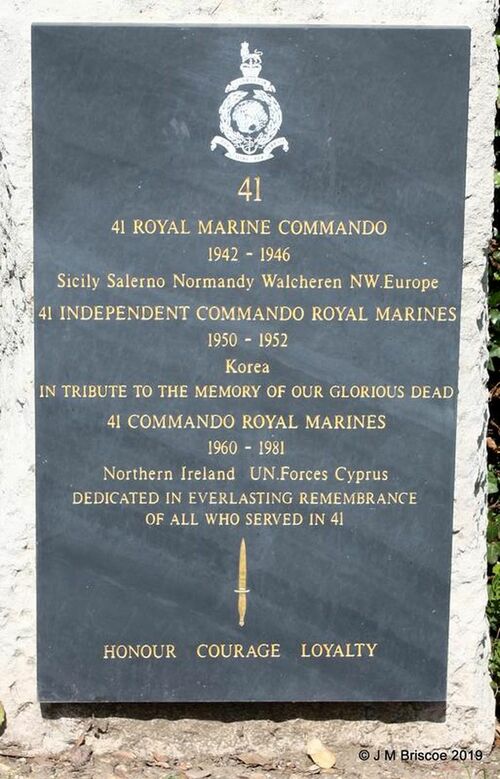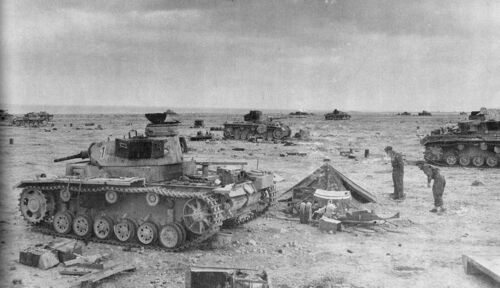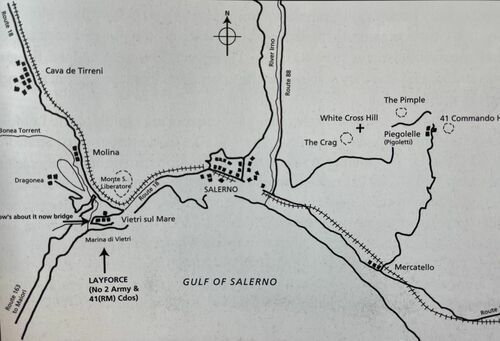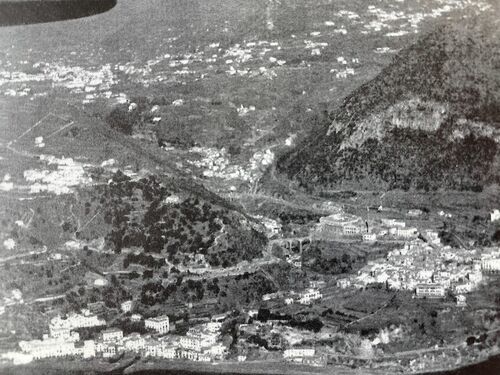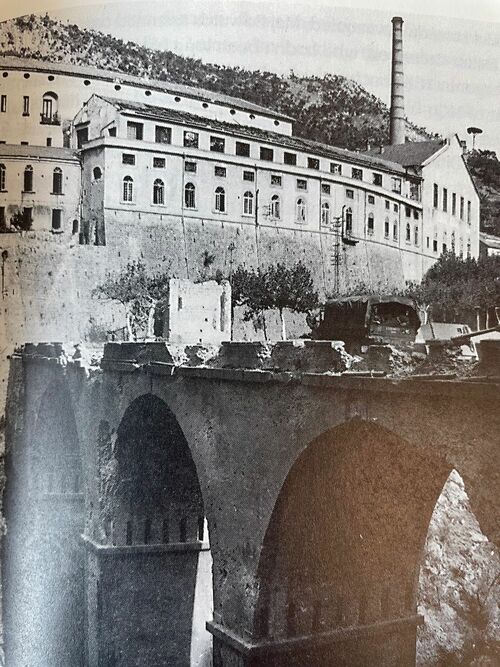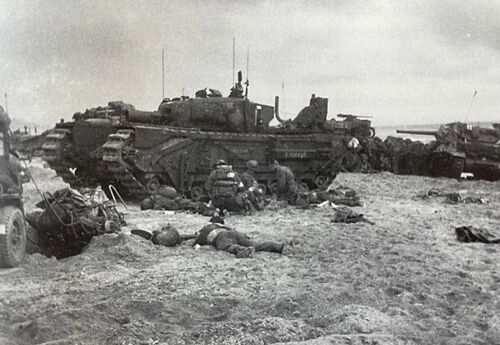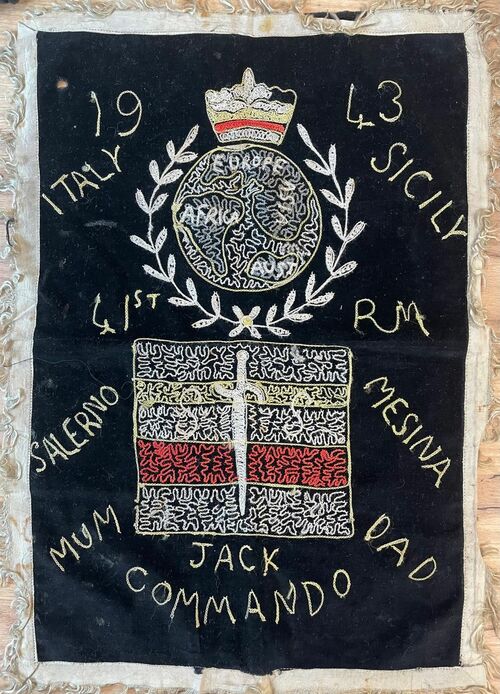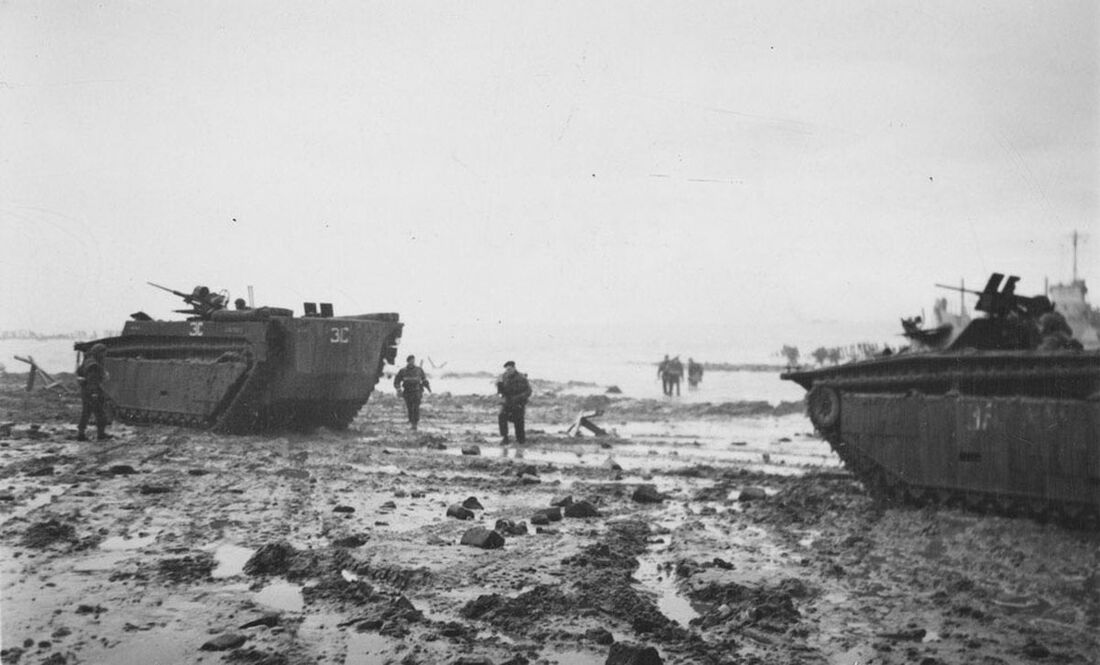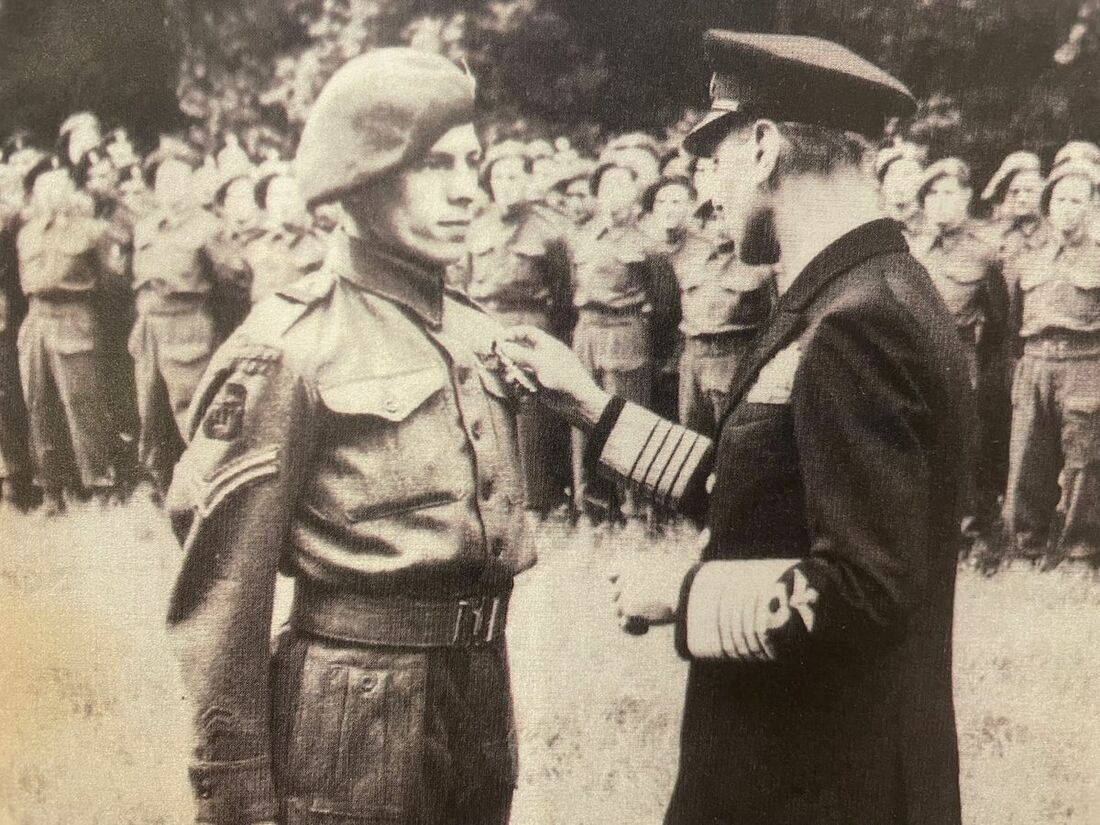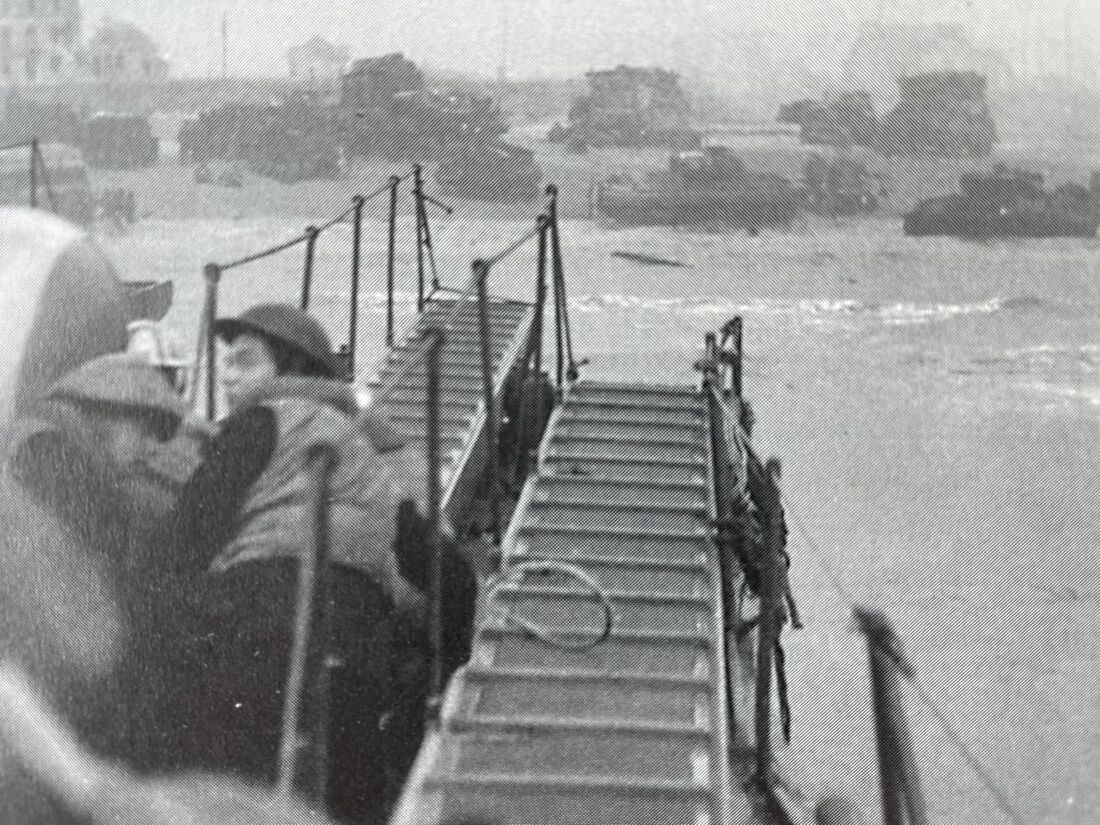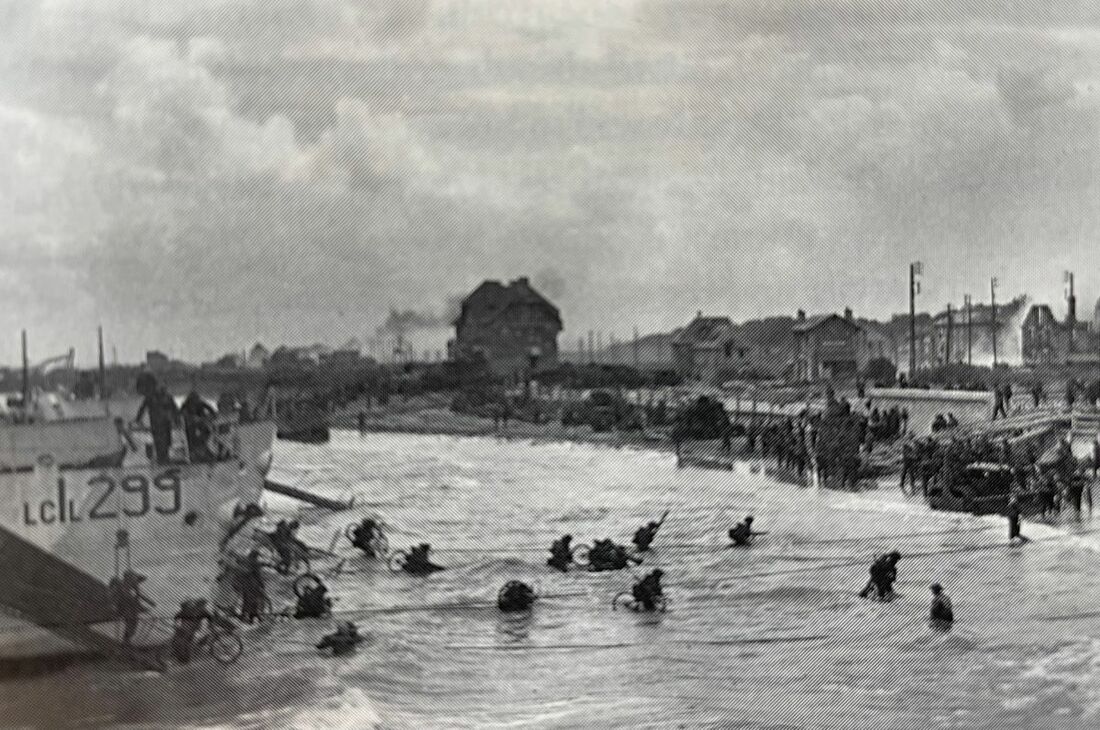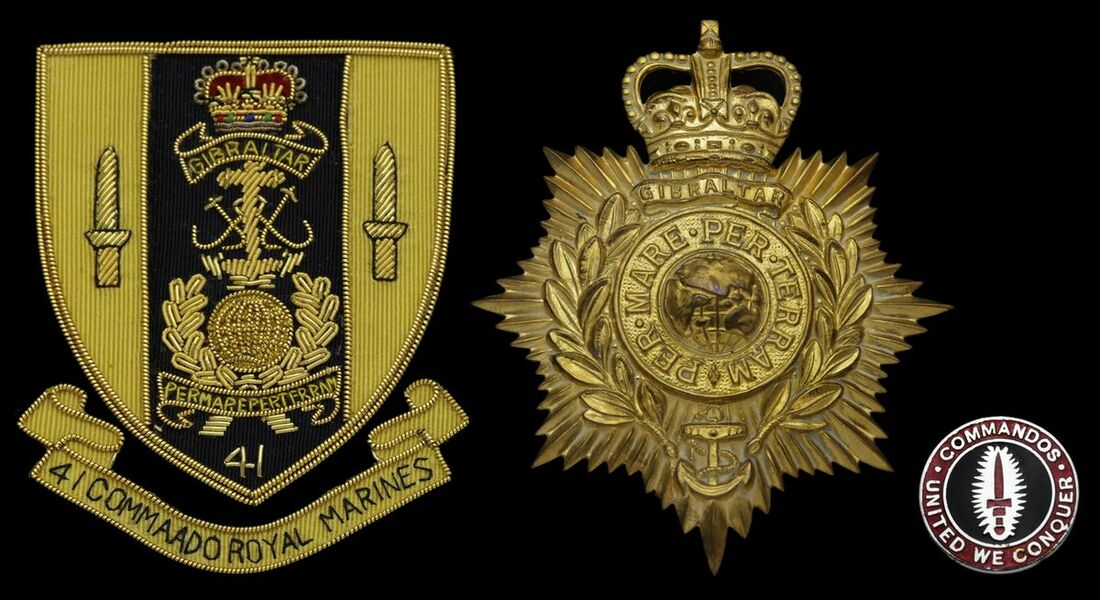Auction: 23001 - Orders, Decorations and Medals
Lot: 388
An outstanding 'Salerno' M.M. group of five awarded to Sergeant J. W. Hadfield, 41 (Royal Marine) Commando, Royal Marines, who was decorated for his fine work on 'Black Monday - 13 September 1943', in the fierce actions around Vietri sul Mare; during an action-packed Second World War Hadfield and his unit would share in three famous beach assaults, namely Operation Avalanche (Salerno), Overlord (D-Day) and Infatuate (Walcheren) - on each occasion being in the leading rank
Military Medal, G.VI.R. (Ply.X. 104858 (A.T.Cpl.) J. W. Hadfield, R.M.), on its original pin; 1939-45 Star; Italy Star; France and Germany Star; War Medal 1939-45, Campaign Medals late issues with their named box of issue, good very fine (5)
M.M. London Gazette 27 June 1944. The original recommendation - by the famous Lieutenant-Colonel 'Mad Jack' Churchill, D.S.O. & Bar, M.C. & Bar, Commanding No. 2 Special Service Brigade - states:
'On September 13th 1943 at Vietri Sul Mare this N.C.O. by his outstanding coolness and disregard for danger when his Officer was killed leading a counter attack, rallied his men and succeeded in driving home the attack. When later having only a few men left he was forced to withdraw he succeeded in extricating his men from a very dangerous position. Subsequently he led numerous patrols wisely and well and was at all times an inspiration to his men.'
John William Hadfield was born on 20 April 1923 at New Mills, Derbyshire and was a labourer at a calico printers upon his joining the Royal Marines at Exmouth on 28 August 1941. He joined No. 8 (Guards) Battalion in October 1941 and thence No. 41 (Royal Marines) Commando in November 1942. Appointed Lance-Corporal in April 1943, he was to be with the unit for Operation Avalanche, the Salerno landings.
The entire operation would come under General Mark Clark and his 5th US Army, with the American Rangers going in on the western edge at Maiori and the British Commandos of Brigadier Laycock focussing their attentions on Vietri sul Mare, being made up of No. 2 and 41 Commando.
Into action
Loaded into two LCI(L)'s, they got their signal to put ashore at 0400hrs at Marina di Vietri on 9 September and were thankfully unapposed. They could clearly see that their start had been much simpler than that of their comrades further along the coast, from the flashes and explosions which filled the sky. Their initial task to sweep up to the town of Vietri sul Mare was effected well, scattering an MG34 position on a street corner, but they soon ran into more action. A half-track towing a large field gun was shot up, four of the crew being killed and a dozen taken for the bag. The real focus for the men of 41 Commando would be Dragonea Hill, which commanded the whole of the area. As the first day of action closed, a few locals came out to meet the Allies despite the mortaring and shelling which began to cause mounting casualties.
As day broke on 10 September it was clear the enemy had moved troops into the sector in order to attempt to elimate the small force of Commandos who had landed. They soon let them know they were not welcome and laid down a heavy barrage on the Commandos who were easily observed from the heights. Infantry attacks then came in and positions often changed hands several times in the hand-to-hand combat which followed. It was 'Mad Jack' Churchill who very much saved the day, spotting a party of Germans moving a heavy machine-gun on the Monte San Libertore above the positions of some of 41 Commando: fire was put down onto them and the Reserve was sent in to clear the position. This they did, and in the afternoon a radio signal was put out to ensure all ranks were alert to any attempts from the enemy to infiltrate their lines. Bombs continued to rain down on the town itself, with a salvo wounding their CO and five other-ranks at around 1630hrs in the Commando HQ area in the town of Vietri itself. That night it was reported some 500 infantry, supported by 20 tanks, would attack the next morning.
Saturday dawned and no attacks came in; some of the Commandos joked to each other that the enemy had gone on weekend leave but the calm was simply due to the enemy giving their full attention to a different sector on that day. Spending the intervening hours digging-in and re-filling their rations, elements of the Lincolnshire Regiment and King's Own Yorkshire Light Infantry came to fill in some of the gaps in the line. The much-needed respite was not to last for long as after breakfast on Sunday 12 September, they were put back into the line after a heavy German tank attack into 138 Brigade north of Salerno, and thus the infantry were called out. Both sides did not openly engage one another but it was clear they were both preparing for a clash. The greetings of 'Heil Hitler!' could even be heard from those in the front lines as the enemy accepted deliveries within earshot, together with the less welcome clanking of metal, suggesting tracked vehicles which meant either tanks or self-propelled guns. The Commandos sang their own 'raspberries' to keep spirits up.
Black Monday - M.M.
It is perhaps They did what was asked of them - 41 (Royal Marines) Commando which gives the best account of this day:
'Before the sun was fully above the horizon, a devastating rain of high explosives began falling on the Commando positions, both in the defile and on the hills. After a prolonged pounding of the forward areas, the enemy barrage moved 'up 100' into the support areas while German infantry made their first assault up the vine terraces and along the valley floor. The men of No. 2 on Dragoneo Hill straightened up from their foxholes and beat them back with concentrated small arms fire and grenades. When the German infantry pulled back to re-group, their artillery and mortars resumed the pounding of all Commando positions.
Time and again the forward Troops were subjected to alternate bombardment and infantry attack and, both on Dragonea Hill and in the defile, some ground had to be given....
A short while later, a group of enemy was found to have infiltrated along a gulley to the right of the 'A/Q' line and had managed to set up an MG34 behind the Commando position, RSM Norman Tierney led his much-depleted Machine-Gun Section, now in an infantry role, in a counter-attack and, with 'X' Troop coming up from below, the threat was squeezed out.'
It seems that it was in this moment that Hadfield won his M.M., for Lieutenant L. R. Scott was the Officer of 'X' Troop who was killed on that day and thus the point at which Hadfield carved his name into the history of 41 Commando.
The enemy continued their attacks and began to infiltrate the positions and soon American mortars fell close, laying a barrage of phosphorous bombs little more than 50 yards in front of them. Those in the front slit trenches took it to be a German attack and assumed they would soon be seeing the enemy charging through the white smoke. Some even put this down as the enemy withdrawing behind the screen. The position continued to be critical, with the enemy now within 200 yards of the HQ on the hill; a surge of activity would be needed to firm-up the position and it was decided that a bayonet charge would be made. The 25-pounders put down a 'stonk' and the order to "CHARGE!" given. The forward positions were taken and re-occupied and men of the Yorkshire & Lancashire Regiment moved up to give them some relief. After some six hours of action, the position had been secured as the Commandos went into the Reserve, for now. They were to remain in action until 17 September.
No. 2 and 41 Commandos had, in 10 days, suffered severe casualties - 13 Officers had been killed, with a further 15 wounded. 54 other-ranks were killed and 225 wounded, while one Officer and 59 other ranks were missing. These figures amount to a casualty rate of 48% of the strength of the two Commandos when they landed on the 9 September at the Marina. They had given a truly fine account of themselves.
D-Day and beyond
The unit were to share in another famed beach assault and went ashore on Sword Beach on D-Day, getting their feet onto the beaches at 0845hrs. They were certainly in the thick of the action having 123 casualties that day. Hadfield had been promoted Acting-Temporary Corporal on 1 February 1944. They took part in a good number of actions in the following days which only added to their laurels. Hadfield would be presented with his M.M. from the hand of H.M. The King at Creully on 16 July 1944; just two days later they would be part of Operation Goodwood, as part of the actions around Troarn Bridge.
Hat Trick - Walcheren
Having pushed on into Belgium, the troops of 41 Commando would be presented the oppportunity to further participate in a beach assault, this time on the Island of Walcheren. On 1 November 1944 they would be part of 4th Special Service Brigade. The three Commando units - No. 41, 47 and 48, together with No. 4 (Belgian) and No. 5 (Norwegian) troops of No 10 (IA) Commando, under the command of Laycock - landed at Westkapelle on the western side of the island. The plan called for three troops of No. 41 Commando, under Lieutenant-Colonel Palmer, to land on the north shoulder of the gap blown in the dyke; their objective was to clear the area between there and the village of Westkapelle. The remainder of the Commando, along with the two No. 10 (IA) Commando troops, would then come ashore in Weasels and Buffalos launched from LCTs - their mission would be to clear Westkapelle and then move north. No. 41 overran a pillbox in their path and pushed onto Westkapelle, where they were confronted by a battery of four 150mm guns which were reduced with supporting fire from tanks. The Commandos then moved north along the dyke. Having been in the action for a full week, their job was done.
The Commandos moved onto the Maas River Front. With the end of the Second World War, the unit was eventually disbanded. Hadfield was promoted Sergeant in November 1944 and was released in May 1946. His campaign Medals were claimed in August 2001.
The unit remain widely celebrated and commemorated with the following memorials:
- Lion-sur-Mer named the square outside their Town Hall 'Place du 41 Royal Marines Commando'.
- D-Day Memorial at Lion-sur-Mer to the men of the Commando, in the form of a sun-dial which indicates the exact time of their landing.
- Plaque at Barentin, commemorating their liberation on 31 August 1944.
- No. 4 Special Service Brigade Memorial, Sannerville, Calvados.
- Roll of Honour for Walcheren at Westkapelle Church, unveiled in November 1994 on the 50th Anniversary.
Sold together with letter confirming £20 M.M. gratuity, dated 21 October 1946, a 'Commando Flag' of wartime manufacture, his Commando Badge, silvered and enamel, by Fattorini, the reverse officially numbered '6215', besdies forwarding slip for his Campaign Medals and a copy of They did what was asked of them - 41 (Royal Marine) Commando, from which detail has been extracted.
Subject to 20% VAT on Buyer’s Premium. For more information please view Terms and Conditions for Buyers.
Estimate
£7,000 to £9,000
Starting price
£6500


